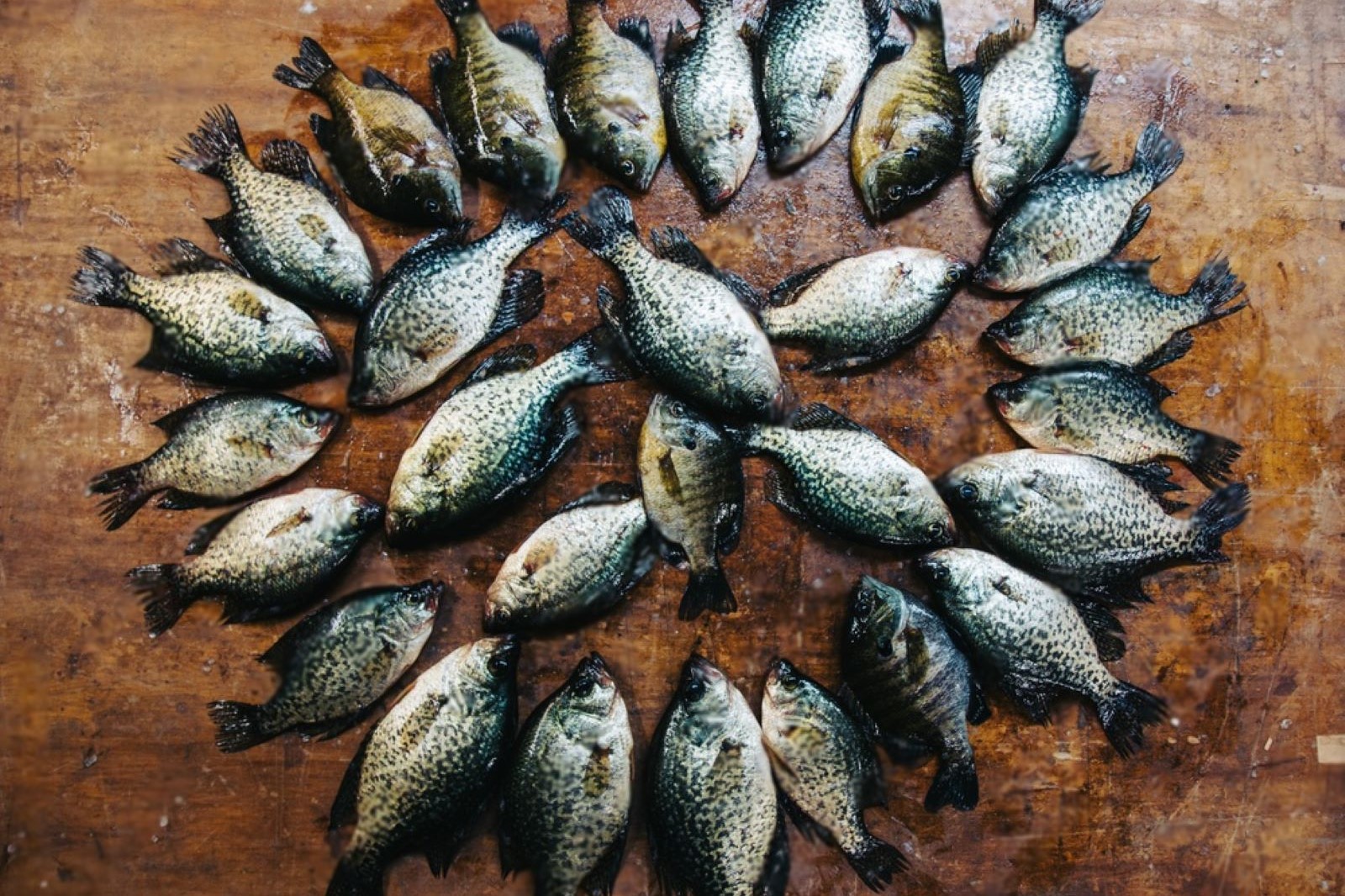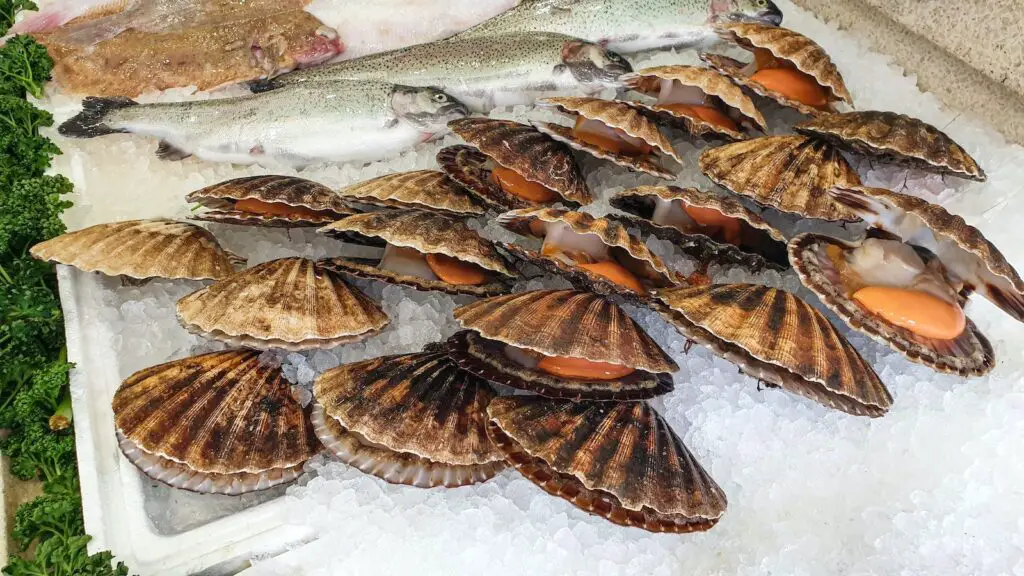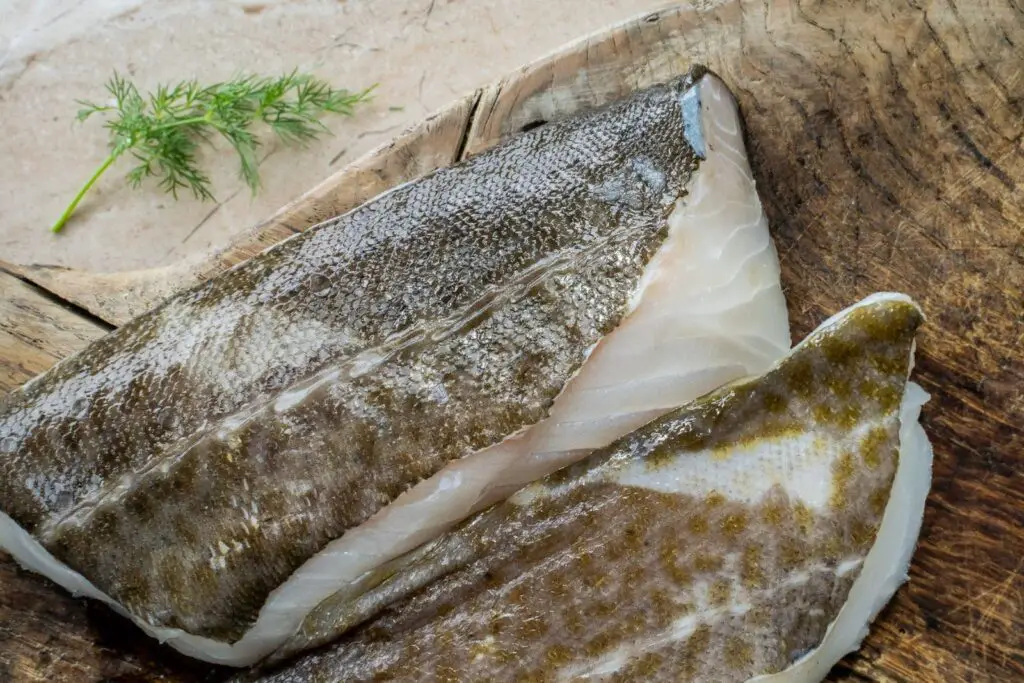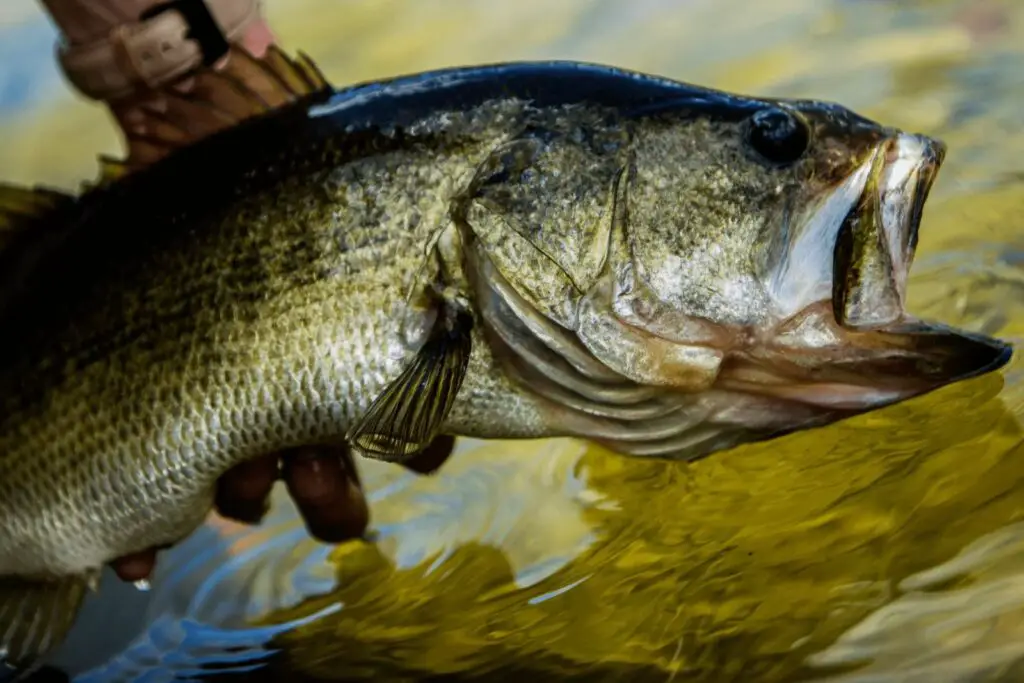
Crappie is a popular freshwater fish known for its delicate flavor and tender meat. Whether you’ve caught a large batch during a successful fishing trip or you want to preserve the crappie you bought from the store, freezing is an excellent method to extend their shelf life. Freezing crappie allows you to enjoy this delectable fish at any time, even when it’s out of season. With a few simple steps, you can freeze crappie while ensuring that it maintains its quality and taste. This article provides a comprehensive guide on how to freeze crappie properly, so you can savor its flavors whenever you crave it.
Here’s a step-by-step guide on how to freeze crappie:
Step 1: Select fresh crappie
When it comes to freezing crappie, selecting fresh fish is crucial to ensure optimal taste and quality after thawing. Choosing fresh crappie that is firm and free from any off-putting odors is essential. If you caught the crappie yourself, it’s important to clean it properly before proceeding with the freezing process.
Freshness is a key factor in determining the overall quality of frozen crappie. Fresh crappie will have a mild, clean aroma and firm flesh. Avoid crappie with a strong fishy smell or signs of discoloration, as these may indicate that the fish is not at its best and could result in an unpleasant taste after freezing and thawing.
If you caught the crappie yourself, it’s crucial to clean it thoroughly before freezing. This involves removing the scales, head, and entrails. Cleaning the crappie not only helps improve its taste but also prevents the growth of bacteria during the freezing process. Properly cleaned crappie will have a better chance of maintaining its quality and flavor when frozen.
If you purchased crappie from a store or fish market, ensure that it meets the criteria of freshness. Look for fish that are displayed on ice and stored at the appropriate temperature. The flesh should be firm and have a bright appearance, indicating that it was handled and stored properly.
Is it necessary to remove the scales before freezing crappie?
It is not necessary to remove the scales before freezing crappie, as the scales do not affect the quality or taste of the fish during freezing. The scales can help protect the fish’s flesh from drying out or absorbing odors in the freezer. However, if you prefer to have the scales removed for convenience or personal preference, you can do so before freezing.
Step 2: Clean and fillet a crappie
To prepare crappie for freezing, it is important to clean and fillet the fish properly. This process removes any undesirable parts and ensures that the fillets are ready for storage.
- Cleaning the crappie:
Begin by thoroughly cleaning the crappie. Rinse it under cold water to remove any dirt, debris, or slime on the surface. Gently rub the fish to ensure all the scales are removed. Scales can be easily scraped off using a knife or a scaler. This step is important as scales can affect the texture and taste of the crappie when frozen.
Once the crappie is scale-free, it’s time to remove the head. Use a sharp knife and make a clean cut just behind the gills, severing the head from the body. Discard the head appropriately.
After removing the head, it’s necessary to gut the crappie. Make a shallow incision along the belly from the anal vent to the base of the throat. Carefully remove the entrails, being cautious not to puncture the organs. Rinse the cavity of the crappie under cold water to ensure it is clean.
- Filleting the crappie:
Filleting is the process of removing the flesh from the crappie’s bones. To fillet a crappie, start by making a long, clean incision along the fish’s backbone. Begin just behind the head and continue cutting down towards the tail, following the natural contour of the fish. Take your time and use smooth, precise strokes to separate the flesh from the bones.
Once you reach the tail, lift the fillet gently to check if any flesh remains attached to the rib bones. If necessary, carefully slice the remaining flesh from the bones, ensuring a clean separation. Repeat this process for each crappie you intend to freeze.
It’s important to note that some anglers prefer to leave the skin on the crappie fillets, as it can help protect the flesh during freezing and cooking. However, if you prefer skinless fillets, you can easily remove the skin by placing the fillet skin-side down on a cutting board and sliding the knife between the flesh and the skin, using a back-and-forth motion.
Cleaning and filleting the crappie not only helps ensure that the fish is free from undesirable elements but also makes it easier to handle and store. Properly cleaned and filleted crappie will freeze more efficiently and maintain its quality during storage, allowing you to enjoy delicious crappie fillets whenever you desire.
Can I freeze crappie whole, or should I fillet them first?
It is generally recommended to fillet crappie before freezing them. Freezing crappie whole can lead to uneven freezing and potential quality issues. Filleting the crappie allows for easier storage, faster freezing, and more efficient use of freezer space. Additionally, removing the skin and bones by filleting can enhance the overall eating experience when it comes time to cook and enjoy the crappie.
Step 3: Rinse and dry the fillets
After filleting the crappie, it’s important to rinse the fillets under cold water to remove any remaining scales or debris that may have been left behind during the cleaning and filleting process. This step helps ensure that the fillets are clean and ready for freezing.
Rinsing the fillets under cold water is an effective way to remove any loose scales or other particles that may be clinging to the surface of the fish. This is especially important as even small scales can affect the texture and taste of the crappie when frozen.
By rinsing the fillets under cold water, you can also help remove any residual blood or slime, further improving the overall cleanliness of the fish. This step contributes to maintaining the quality and flavor of the crappie during storage.
After rinsing, it’s crucial to pat the fillets dry using paper towels or a clean kitchen cloth. Removing excess moisture is important because it prevents the formation of ice crystals on the surface of the fillets during freezing. Ice crystals can lead to freezer burn and affect the texture and taste of the fish.
Drying the fillets thoroughly helps to preserve their integrity and minimize the risk of unwanted texture changes. It’s essential to be gentle when patting the fillets dry to avoid damaging the delicate flesh.
Step 4: Wrap the fillets individually
To ensure the best possible protection for your crappie fillets during freezing and to maintain their quality, it is important to wrap each fillet individually. This step helps prevent freezer burn, which can negatively impact the texture and taste of the fish.
By wrapping each crappie fillet individually, you create a barrier that helps protect the fish from exposure to air and moisture, which are the main culprits of freezer burn. Freezer burn occurs when the moisture in the fish evaporates, leading to dehydration and the formation of dry, discolored patches on the surface. This can result in a loss of flavor and texture.
Using either plastic wrap or aluminum foil, wrap each fillet tightly, ensuring that there are no gaps or openings. Plastic wrap is a convenient option as it adheres well to the fillets and provides a tight seal. Aluminum foil is also effective and provides an extra layer of protection against air and moisture.
Individual wrapping offers the added benefit of convenience when it comes to thawing and using the crappie fillets. With each fillet wrapped separately, you can easily thaw and use only the desired amount without having to defrost the entire package. This helps prevent unnecessary waste and allows you to enjoy the crappie fillets in smaller portions as needed.
When wrapping the fillets, make sure to label each package with the date of freezing to keep track of their storage time. This will help you prioritize the use of the oldest fillets first, ensuring that none of them remain in the freezer for an extended period.
Step 5: Place the fillets in freezer-safe bags or containers
After individually wrapping the crappie fillets, it’s time to transfer them to freezer-safe bags or airtight containers. This step is crucial for providing further protection against freezer burn and maintaining the quality of the fish during freezing.
Freezer-safe bags or containers create a sealed environment that helps prevent air and moisture from coming into contact with the crappie fillets. This is important because exposure to air and moisture can lead to freezer burn, which can negatively impact the texture and taste of the fish over time.
When selecting freezer-safe bags or containers, ensure that they are specifically designed for freezer storage. These bags or containers are usually made of thicker and more durable materials that are resistant to low temperatures and provide a better barrier against air and moisture.
When placing the individually wrapped crappie fillets into the bags or containers, it’s important to remove as much air as possible before sealing them. Air contains moisture, which can contribute to freezer burn. Removing excess air helps minimize the risk of freezer burn and maintains the quality of the fillets.
There are different methods to remove air from the bags, such as using a vacuum sealer or the water displacement method. With a vacuum sealer, you can remove air and create a tight seal. Alternatively, for the water displacement method, partially seal the bag, leaving a small opening. Submerge the bag in water, allowing the water pressure to push out the air. Once the air is removed, seal the bag completely.
If using airtight containers, ensure they have a secure lid or cover that creates a tight seal. This prevents air and moisture from entering the container and affecting the crappie fillets.
Should I use freezer bags or containers to freeze crappie?
Using freezer bags is generally a better option for freezing crappie. Freezer bags are more flexible and allow for better air removal, reducing the risk of freezer burn. They also take up less space in the freezer compared to containers. However, if you opt for containers, make sure they are airtight to prevent air exposure and use ones specifically designed for freezer storage.
Step 6: Label and date the packages
After placing the individually wrapped crappie fillets in freezer-safe bags or containers, it is important to label each package with the contents (crappie fillets) and the date of freezing. This step serves as a vital organizational measure to keep track of the storage time and prioritize the use of the oldest crappie fillets first.
Labeling each package with the contents, in this case, “crappie fillets,” helps you easily identify what is stored in each package without having to open or guess. It simplifies the process of finding and selecting the desired fillets when it’s time to thaw and cook them.
Additionally, including the date of freezing on each package is crucial for keeping track of how long the crappie fillets have been in the freezer. Freezing is not a method of preservation that lasts indefinitely, and the quality of the fillets can deteriorate over time. By knowing the date of freezing, you can monitor the storage time and ensure that you use the oldest fillets first to maintain their quality and taste.
Using a permanent marker to label the packages is recommended, as it will withstand the freezing temperatures and remain visible throughout the storage period. Write the information clearly and legibly on each package, making sure it is easy to read at a glance.
Organizing your frozen crappie fillets with proper labeling allows you to establish a rotation system, ensuring that you use the oldest fillets before they exceed their optimal storage time. This reduces the risk of the fillets staying in the freezer for an extended period, which could affect their flavor and texture.
Step 7: Store in the freezer
Once you have properly labeled and dated the packages of crappie fillets, it’s time to store them in the freezer. The way you store the fillets in the freezer can significantly impact their quality and shelf life.
Choose the coldest part of your freezer to store the crappie fillets. This is typically towards the back of the freezer, where the temperature remains most consistent. By placing the fillets in this area, you ensure that they are exposed to the optimal freezing conditions and reduce the risk of temperature fluctuations.
Maintaining a consistently cold temperature is crucial for preserving the freshness and quality of the crappie fillets. The freezer should be set at or below 0°F (-18°C) to ensure the fish remains properly frozen. At this temperature, the growth of bacteria and other microorganisms that can cause food spoilage is significantly slowed down or inhibited.
Freezing the crappie fillets at a sufficiently low temperature helps retain their flavor, texture, and nutritional value. It also minimizes the risk of developing freezer burn, which can negatively affect the taste and overall quality of the fish.
Properly organizing the freezer is also important to avoid damage to the fillets. Ensure that the packages are placed in a way that prevents them from being crushed or damaged by other items in the freezer. If needed, you can use dividers or containers to separate the packages and maintain their integrity.
Remember to keep the freezer door closed as much as possible to maintain a consistent temperature. Frequent fluctuations in temperature can affect the quality of the frozen crappie fillets.
How long can I freeze crappie in the freezer?
Crappie can be safely stored in the freezer for up to three to four months without a significant loss in quality. However, for the best taste and texture, it is recommended to consume the frozen crappie within one to two months. Proper packaging is crucial to prevent freezer burn, which can affect the flavor and texture of the fish. Ensure that the crappie is tightly sealed in airtight freezer bags or containers, removing as much air as possible before freezing. Regularly check the quality of the frozen crappie and discard any that show signs of freezer burn or deterioration.
Other related questions
How do I defrost crappie?
To defrost crappie, the safest method is to transfer the frozen fish from the freezer to the refrigerator. Place the sealed package or container of crappie in the refrigerator and allow it to thaw slowly overnight or for about 24 hours. This gradual thawing process helps maintain the texture and flavor of the fish. Once fully thawed, the crappie can be used in your desired recipe or cooked according to your preference. Avoid using rapid thawing methods such as hot water or a microwave, as they can result in uneven thawing and potentially affect the quality of the fish.
Can I refreeze previously thawed crappie?
It is generally not recommended to refreeze previously thawed crappie. When you thaw crappie, the process causes some changes in the fish’s structure and can result in the growth of bacteria. Refreezing the fish after it has been thawed and potentially exposed to room temperature can further promote bacterial growth and compromise food safety. It’s best to plan your portions accordingly and only thaw the amount of crappie you intend to use in one sitting to ensure the highest quality and safety.
How do I know if my crappie has gone bad?
There are a few indicators that can help you determine if your crappie has gone bad. First, check for any unusual or foul odors. Fresh crappie should have a mild, clean smell. If you notice a strong, unpleasant odor, it’s a sign of spoilage. Second, examine the appearance of the fish. Look for signs of discoloration, such as darkening or browning of the flesh. Additionally, if the crappie feels slimy or sticky to the touch, it’s likely spoiled. Lastly, trust your instincts. If something seems off or if you have any doubts about the freshness of the crappie, it’s best to err on the side of caution and discard it.
Can I use frozen crappie with the fresh ones?
Yes, you can use frozen crappie alongside fresh ones in your recipes. Combining frozen and fresh crappie is a common practice and can provide convenience and variety. However, keep in mind that the cooking time may vary slightly between the frozen and fresh portions, as the frozen crappie may take a bit longer to cook through. Ensure that the frozen crappie is fully thawed before adding it to your dish, and adjust the cooking time accordingly to ensure even doneness for all the fish.
Can I freeze crappie without any seasoning or marinade?
Yes, you can freeze crappie without any seasoning or marinade. Freezing crappie in its natural state allows for more versatility in its use later on. By freezing it plain, you have the option to season or marinate the crappie according to your specific recipe or preference when you decide to cook it. This way, you have more control over the flavors and can tailor them to suit different dishes.
Can I freeze crappie that has already been cooked?
Yes, you can freeze crappie that has already been cooked. However, it’s important to properly cool the cooked crappie before freezing to prevent bacterial growth. Allow the cooked crappie to cool completely, then transfer it to airtight freezer bags or containers. Frozen cooked crappie can be safely stored for up to three months, and it can be thawed and reheated when you’re ready to enjoy it.
Can I freeze crappie alongside other types of fish or seafood?
Yes, you can freeze crappie alongside other types of fish or seafood. When freezing different types of fish or seafood together, it’s important to ensure they are properly wrapped or sealed to prevent cross-contamination and maintain their individual flavors. It’s recommended to separate the different types of fish or seafood into separate freezer bags or containers to prevent flavor transfer. Additionally, it’s a good idea to label the packages with the type of fish or seafood and the date of freezing for easier identification.








